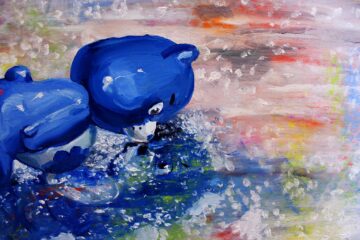Attending to the faithful depiction of mirages is an accepted mode of artistic practice. In the heightened experience of contemplation, it is easy to escape the hectic pace of everyday life. The diligent elaboration of the still-life, the composition swelling into an attraction during the quiet afternoon hours, reveals a simple concept: to visualise the process of learning to see.
What does the painter learn when he tries to cram himself back into the school desk? What treasures await him in the cavernous depths of self-education? A range of things filters into the painting process: art-historical antecedents, the various tendency-frequencies of contemporary painting, scurrying at different speeds and vibrating on alternative wavelengths, and the esteemed painterly gimmicks and palette-organising strategies, meticulously explained on video-sharing platforms. As we delve into the microcosm of the paintings, will we become equipped with the most vital tricks of the trade to evoke a few of our favourite things in a dignified way?
In Patrick Tayler’s (1989) exhibition titled I am Learning to See, we can reconstruct the cutesy shadow world that emerges from the artist’s hours spent ogling, squinting and gazing. The yoghurt-injected Haribo bears frolicking on the metal poster, the grinning foil ghost, the winking kittens and the gummy worms squirming around on the cover of a children’s book dedicated to natural disasters all invite the eye to participate in the game.
